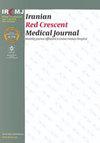Comparison of Monopolar and Bipolar Electrocautery Excision Techniques in Pilonidal Sinus Disease: A Retrospective Clinical Study
IF 0.2
4区 医学
Q3 MEDICINE, GENERAL & INTERNAL
引用次数: 0
Abstract
Background: There is no standard method for the treatment of pilonidal sinus disease (PSD). Today, many different treatment methods are attempted. Some of the leading methods are surgical procedures with different flap techniques and less invasive methods, such as crystallized phenol, laser pilonidoplasty, radiofrequency excision, and monopolar electrocautery excision. Objectives: This study aimed to compare the monopolar and bipolar electrocautery excision techniques that we performed in our clinic for PSD. Methods: Patients who received pilonidal sinus treatment in our clinic between January 2018 and January 2021 were analyzed retrospectively. The exclusion criteria were diabetes mellitus, renal failure, immunosuppression, and children (<16 years of age). The study included a total of 36 patients who met the criteria. Data were retrospectively obtained from hospital archive records (operative notes, discharge summary, and outpatient dressing records). The patients were then divided into two groups, namely monopolar electrocautery excision (group 1) and bipolar electrocautery excision (group 2). Results: The mean age of 36 patients included in the study was 22.9 years. There was no difference between the two groups in terms of predisposing factors (gender, obesity, hirsutism, and smoking). There was also no statistical difference in terms of mean healing time and recurrence rate. Monopolar and bipolar electrocautery excisions lasted 32.2±8.9 and 38.8±7.8 minutes, respectively (P<0.05). Accordingly, the operative time was significantly different between the groups, and it was shorter in the monopolar electrocautery excision group. Furthermore, the bipolar electrocautery group showed shorter wound infection duration, compared to the monopolar electrocautery excision group (P<0.05). Conclusion: Both excision techniques were similar in terms of wound healing, hospital stay, and recurrence rates. The operative times were longer in bipolar cautery; however, the wound infection was less.Pilonidal窦疾病单极和双极电刀切除技术的比较:回顾性临床研究
背景:毛毛窦疾病(PSD)的治疗尚无标准方法。今天,人们尝试了许多不同的治疗方法。一些主要的方法是外科手术,采用不同的皮瓣技术和侵入性较小的方法,如结晶苯酚、激光毛囊成形术、射频切除和单极电切。目的:本研究旨在比较我们在临床治疗PSD的单极和双极电切技术。方法:回顾性分析2018年1月至2021年1月在我诊所接受毛膜窦治疗的患者。排除标准为糖尿病、肾功能衰竭、免疫抑制、儿童(<16岁)。该研究共包括36名符合标准的患者。回顾性资料来源于医院档案记录(手术记录、出院总结和门诊换药记录)。然后将患者分为两组,即单极电切组(1组)和双极电切组(2组)。结果:纳入研究的36例患者平均年龄22.9岁。两组在易感因素(性别、肥胖、多毛症和吸烟)方面没有差异。两组的平均愈合时间和复发率也无统计学差异。单极和双极电切时间分别为32.2±8.9 min和38.8±7.8 min (P<0.05)。因此,两组间手术时间差异有统计学意义,单极电切组手术时间更短。双极电切组创面感染持续时间较单极电切组短(P<0.05)。结论:两种手术方法在伤口愈合、住院时间和复发率方面相似。双极烧灼术的手术时间较长;但伤口感染较少。
本文章由计算机程序翻译,如有差异,请以英文原文为准。
求助全文
约1分钟内获得全文
求助全文
来源期刊

Iranian Red Crescent Medical Journal
MEDICINE, GENERAL & INTERNAL-
CiteScore
1.16
自引率
0.00%
发文量
0
期刊介绍:
The IRANIAN RED CRESCENT MEDICAL JOURNAL is an international, English language, peer-reviewed journal dealing with general Medicine and Surgery, Disaster Medicine and Health Policy. It is an official Journal of the Iranian Hospital Dubai and is published monthly. The Iranian Red Crescent Medical Journal aims at publishing the high quality materials, both clinical and scientific, on all aspects of Medicine and Surgery
 求助内容:
求助内容: 应助结果提醒方式:
应助结果提醒方式:


